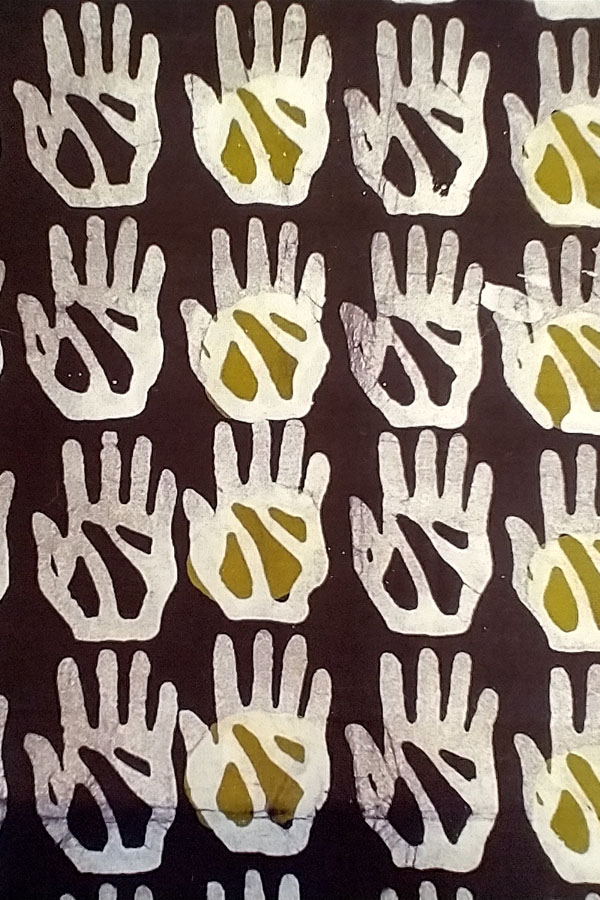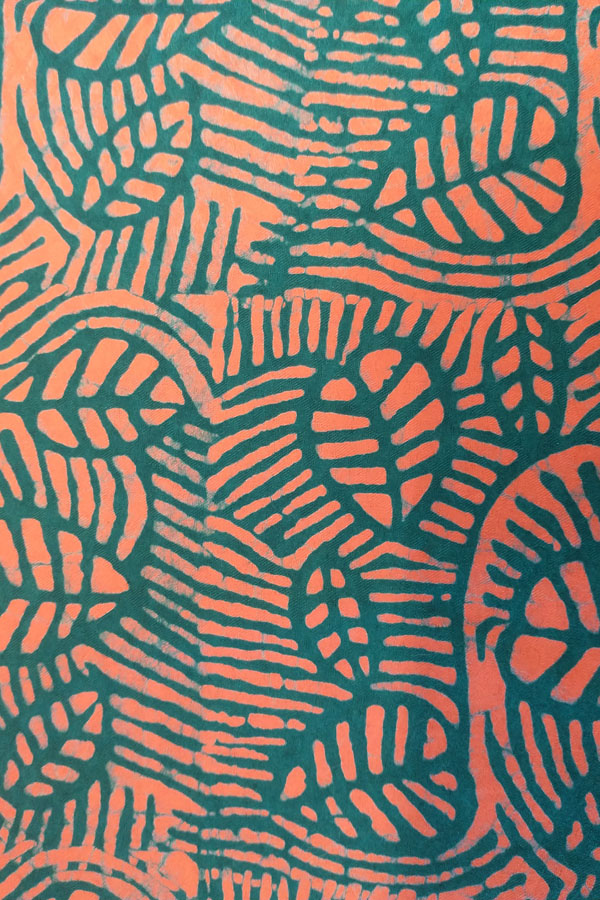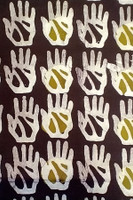The artisan-made clothing from Africa that features wild designs and colors has a perplexing history
Posted by Rose on 2nd Mar 2022
Since the 19th century, Africa’s artisanal clothing traditions have been upended by western textile imports and the influence of their foreign designs.

In the 1990s, both our kids were foreign exchange students and we played host parents to other kids from the same international program. It was at a party we threw for some of the exchange students that Mami, a vivacious girl from Congo, brought along a photo album to which I was instantly drawn. The subjects were Mami’s friends, family, and neighbors—all decked out in their finest apparel. The prints were astoundingly bold and the colors tended toward beyond-vibrant. I still have a vivid image of one print in that album, a design of giant flip phones on a ground of intense lime green.
Later, two friends, one a Peace Corps volunteer and the other an NGO worker, brought back some eye popping prints from Africa. It was only then that I became dimly aware of the history of wax print textiles on the continent. Already being familiar with traditional Javanese batik, I was struck by the frequent similarities in designs with their African counterparts. As I delved deeper, I kept tripping over surprising discoveries; wax prints have had a lengthy and tangled history that is woven into the story of colonialism. It also raised questions about authenticity where artisan-made clothing is concerned, and what exactly is artisanship.
A wonderfully illustrated story by the BBC poses the question, are wax prints Africa’s pride, or are they another artifact of colonial domination? The answer, as you may have guessed, is complicated. In today's global economy, things have only become more complex. Even manufactured wax prints are feeling the pressure from mass-produced screen prints from Asia that are far simpler to produce in vast quantities.
But I’m getting ahead of myself; a little history first: The origin of these vivid prints lies on another continent thousands of miles away and three centuries ago. Both British and Dutch colonialists were impressed by the batik work they found in Indonesia and what is modern-day Malaysia. They soon set about trying to mechanize what had always been hand-crafted. Holland won the race to create machine-made prints, that like batiked cloth, used wax as a resist as the fabric was dyed in successive colors. Around 1850, the first machine-made Dutch prints were exported back to Java where they did poorly. Local batik artists had by this time begun using metal printing blocks that created designs on cloth far more quickly than with hand-applied techniques.
How Javanese designs made their way to Africa
Around this same time, European textile merchants began hearing about the demand for batiked cloth in Africa’s Gold Coast ports. They soon started shipping Dutch machine-made prints, largely based on Javanese motifs, to an eager African market. It’s claimed that it was West African soldiers working for the Dutch who brought batik fabrics back to Africa. That’s likely a myth, but by the early 20th century, the British had also jumped into manufacturing batik-like prints and they too exported their goods to Africa where they were well received. Some of the designs to be seen on the streets of African cities today mirror those earliest imports. Part of the appeal of batik fabrics was its relative lightness in African climates as well as that is was far easier to work with on sewing machines that struggled with heavier, handwoven native textiles. The designs in many cases were similar to indigenous African tie-dye techniques, further hastening acceptance.
As the BBC story recounts, Dutch wax-resist textiles manufactured in both in the Netherlands and in Ghana are now struggling with the competition posed by cheap Asian imports that resemble the real thing quite closely. Though the mass-manufactured bolts can be spotted, they continue to do well thanks to their bargain-basement pricing.

In this era when cultural appropriation is a hot topic, the ethical questions raised by westerners copying indigenous designs are many. And when modern-day manufacturers then turn around and sell those traditional motifs to an entirely different population, that amplifies the questions of cultural appropriation. Complicating matters further, the twining of Indonesian traditional designs with African motifs has created striking new designs—obviously an aesthetically positive development. As I said, it’s complicated.
An article on France 24’s website reports on further developments in the unfolding story of batik in Africa. Vlisco Group, a large Dutch wax-print manufacturer, had something of a monopoly in Africa on the fabric until the incursion of low-cost Chinese imports. Their monopoly was so dominant, Vlisco Group actually still charges more for their machine-made prints than indigenous Ivory Coast weavers charge for their hand-woven, patterned creations. To maintain market share, European manufacturers are paying close attention to designs that are popular in African markets, then replicating them. In this way they hope to compete against cheaper Asian imports.
Meanwhile, traditional African fabrics are staging a comeback, as is also reported in the France 24 story. A resurgent market for artisan-made clothing is another sign of pushback against knockoffs. Both developments reflect a growing pride in local artisanship springing up all over the African continent. Aiding this, some governments are encouraging more traditional dressing by both women and men.
Share:





